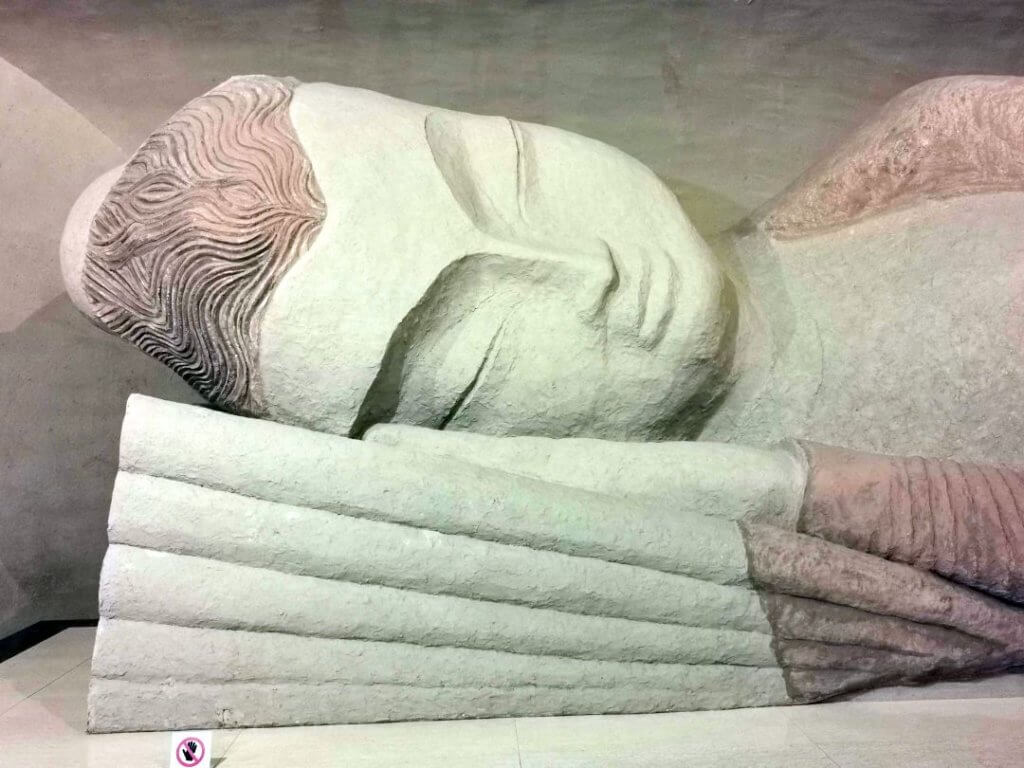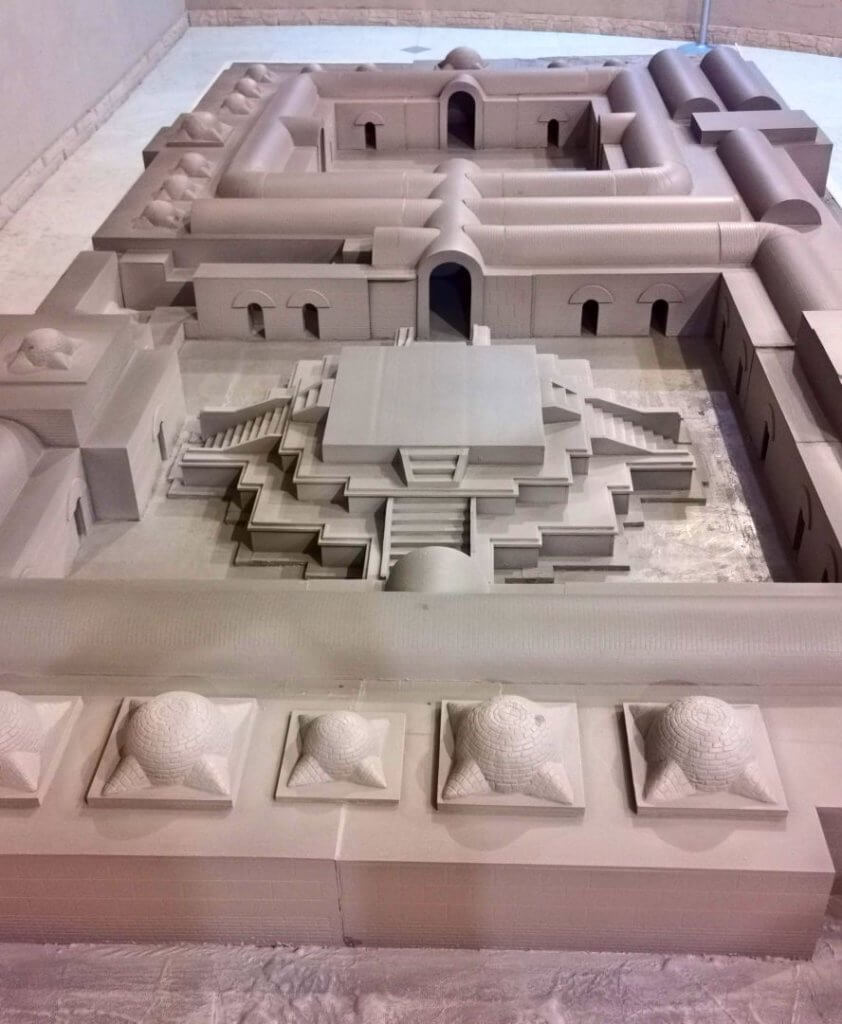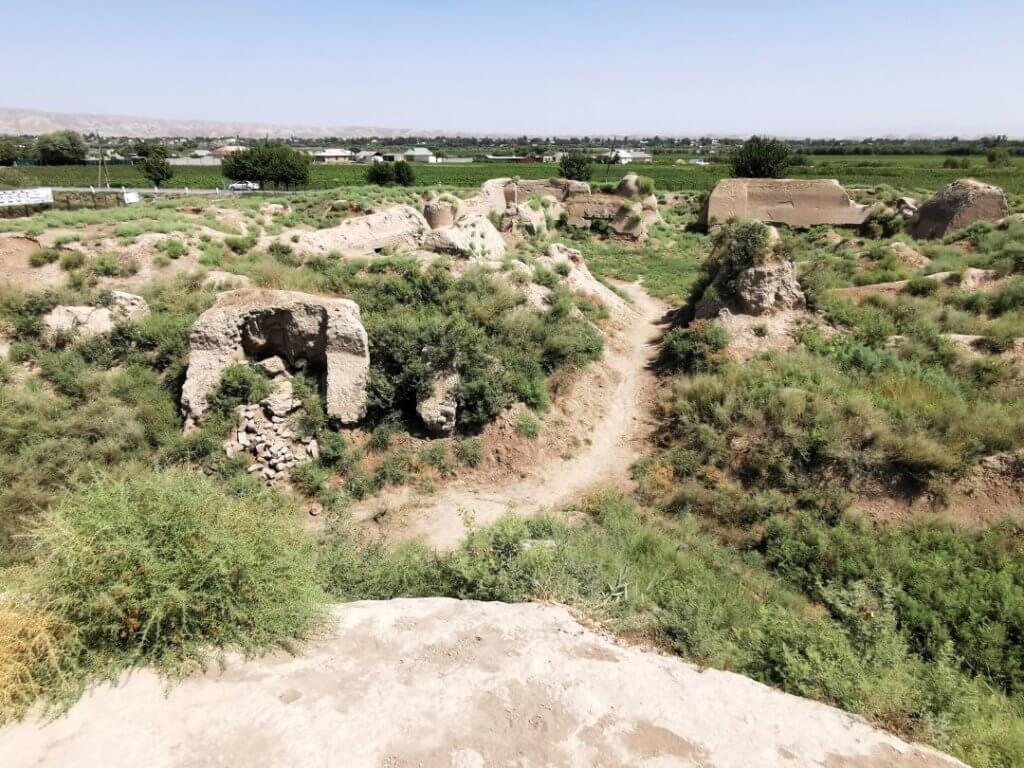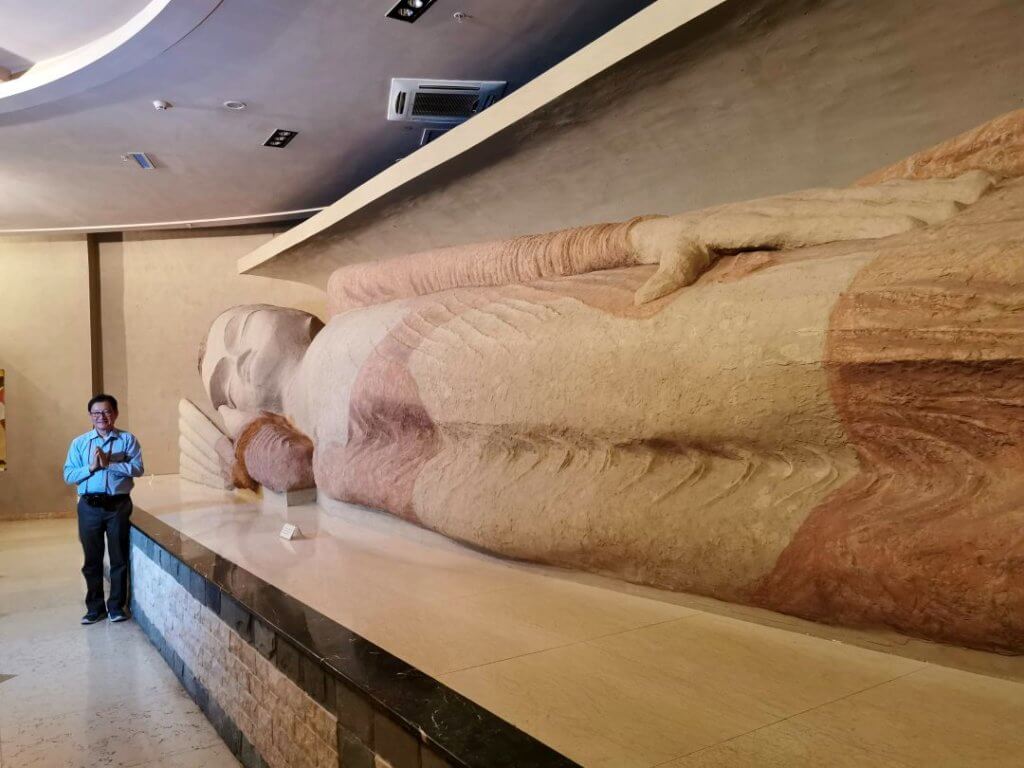by Datuk Seri Dr. Victor Wee

In August this year, I traveled to Tajikistan in Central Asia to view the largest reclining Buddha statue found in Central Asia. The massive 12.85 metre (42 feet) statue of the reclining Buddha was discovered in the early 1960s at the Ajina-Tepe Buddhist monastery located in Vakhsh Valley in southern Tajikistan.
The monastery complex existed from the 7th to 8th century when Buddhism was practiced in Central Asia for 1000 years. Tajikistan was part of the Kushan Empire, which encompassed Bactria, a state found by the descendants of soldiers left behind by Alexander the Great. The monastery was destroyed and deserted during the Arab conquest of this territory during 737-50 CE.

The Ajina-Tepe monastery was a large complex measuring 50 by 100 metres and consisted of two parts: the temple premises and the monks’ living quarters. The locals call the mound that covered the abandoned monastery “Ajina-Tepe”, which translates as “Devil’s Hill”, possibly because of the murals of Dhamma protectors to scare off malevolent spirits.

The archaeological excavations, which started in 1961 and finished in 1966, came up with a large amount of artifacts: sculptures of Buddha, Bodhisattvas, and devas and wall painting fragments. The most impressive part of the discovery was a massive clay statue of the reclining Buddha, where only the bottom part of the figure, from the waist to the soles was intact, while the upper part of the sculpture was badly damaged and had to be restored.

The reclining Buddha and artifact are relocated and exhibited at the Tajikistan National Museum of Antiquity at the capital city of Dushanbe. Some of the artifacts found their way to the Hermitage Museum in St. Petersburg, Russia, which has a large wing for Buddhist art, statues and religious objects.
